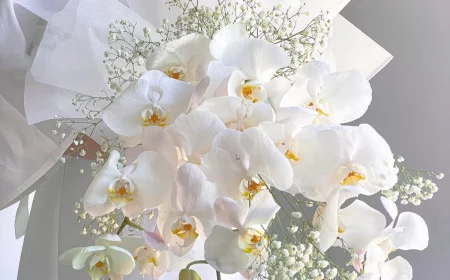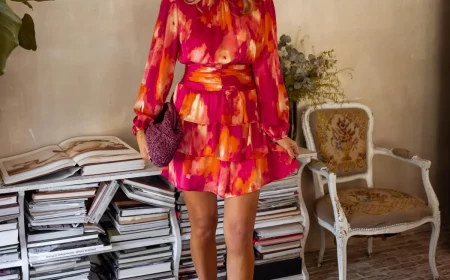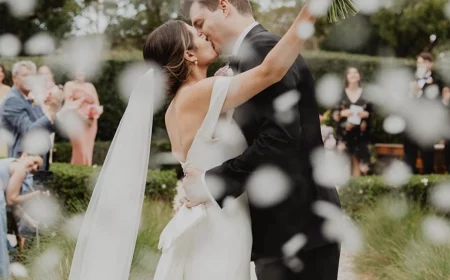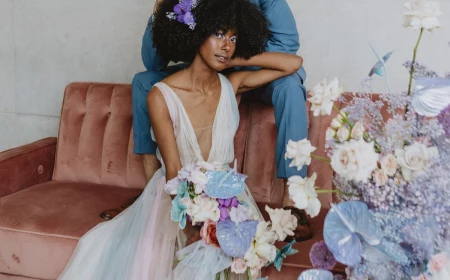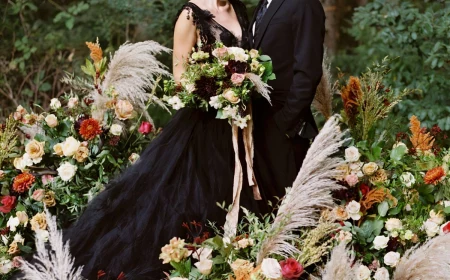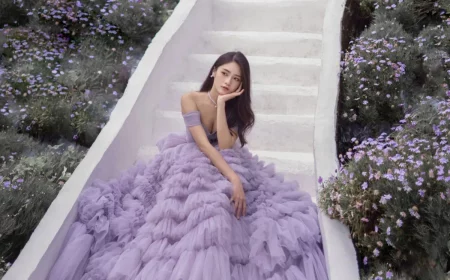The Honest Truth About Floral Wedding Gowns (From Someone Who’s Seen It All)
After more than twenty years of fitting brides, I’ve seen it all. Trends come and go, but let’s be real—the magic of a floral wedding dress is here to stay. It hits that sweet spot between timeless romance and personal expression. But here’s the thing: that gown you fell in love with on Pinterest looks a whole lot different in person. The feel of the fabric, the heft of the beadwork, the way the petals catch the light… you can’t get that from a screen. I want to pull back the curtain and share what I’ve learned, so you can choose a dress you don’t just love, but that you truly understand.
In this article
A floral gown isn’t just a pretty pattern. It’s a marvel of art and engineering. Getting to know the nuts and bolts—the fabrics, the techniques, the hidden structure—will empower you to pick a gown wisely, appreciate its price tag, and feel absolutely incredible on your big day.
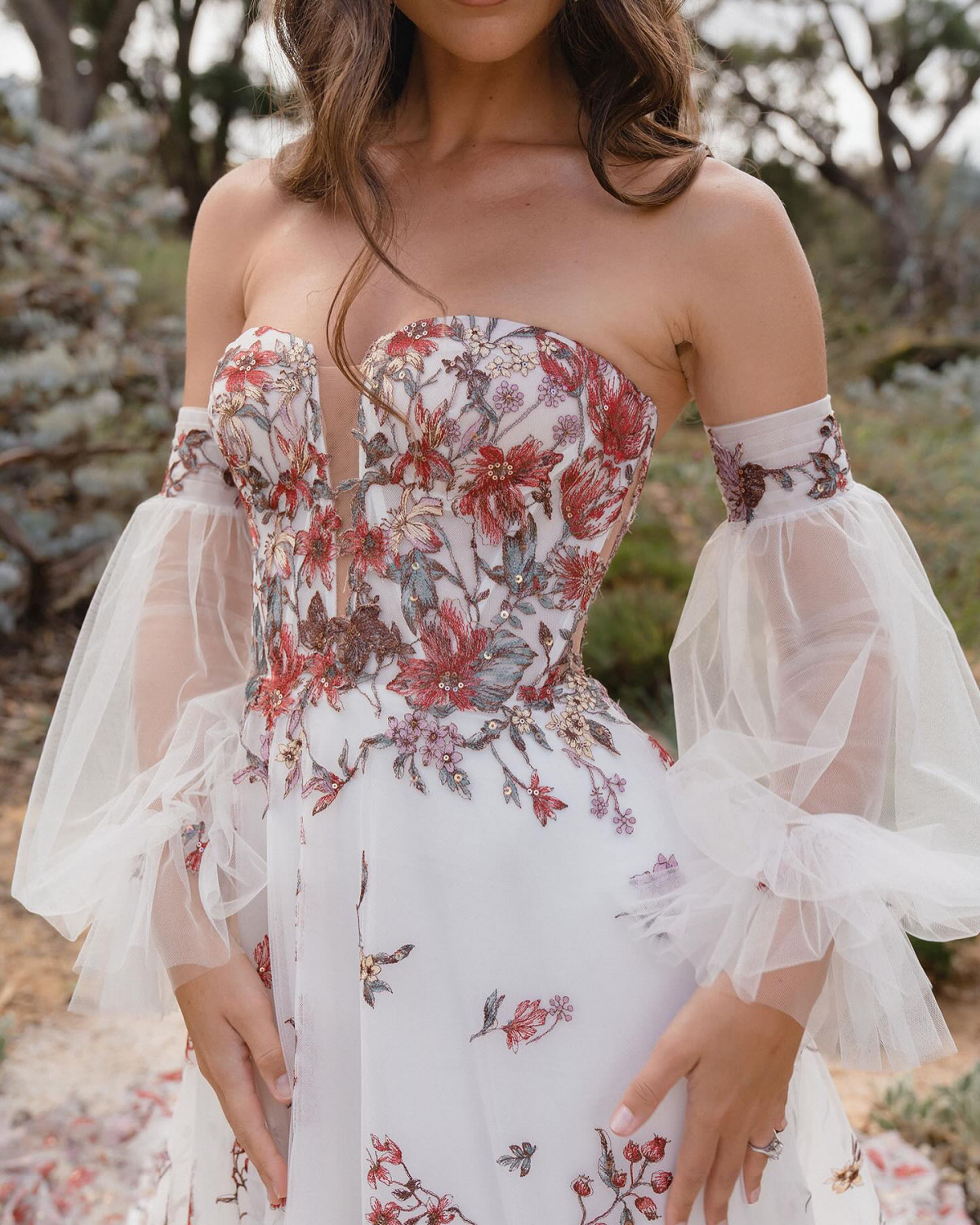
Quick tip for right now: Before we dive in, open up Pinterest and create a new, private board. But don’t just search for “floral wedding dress.” As you read this, you’ll learn the lingo. Try searching for specific terms like “3D floral appliqué ballgown” or “printed organza A-line dress.” Trust me, your search results will get a whole lot better.
Let’s Talk Fabric: The Canvas for Your Dream Dress
The very first thing the pros decide on is the base fabric. This choice dictates absolutely everything—how the dress hangs, its shape, and how the floral details will look and feel. Think of it as the foundation of a house; you can’t build something stunning on a shaky base. Each fabric has its own personality.
For That Soft, Dreamy Vibe
If you’re picturing a gown that seems to float on air, you’re looking at lightweight fabrics. These are perfect for romantic, softer floral styles.
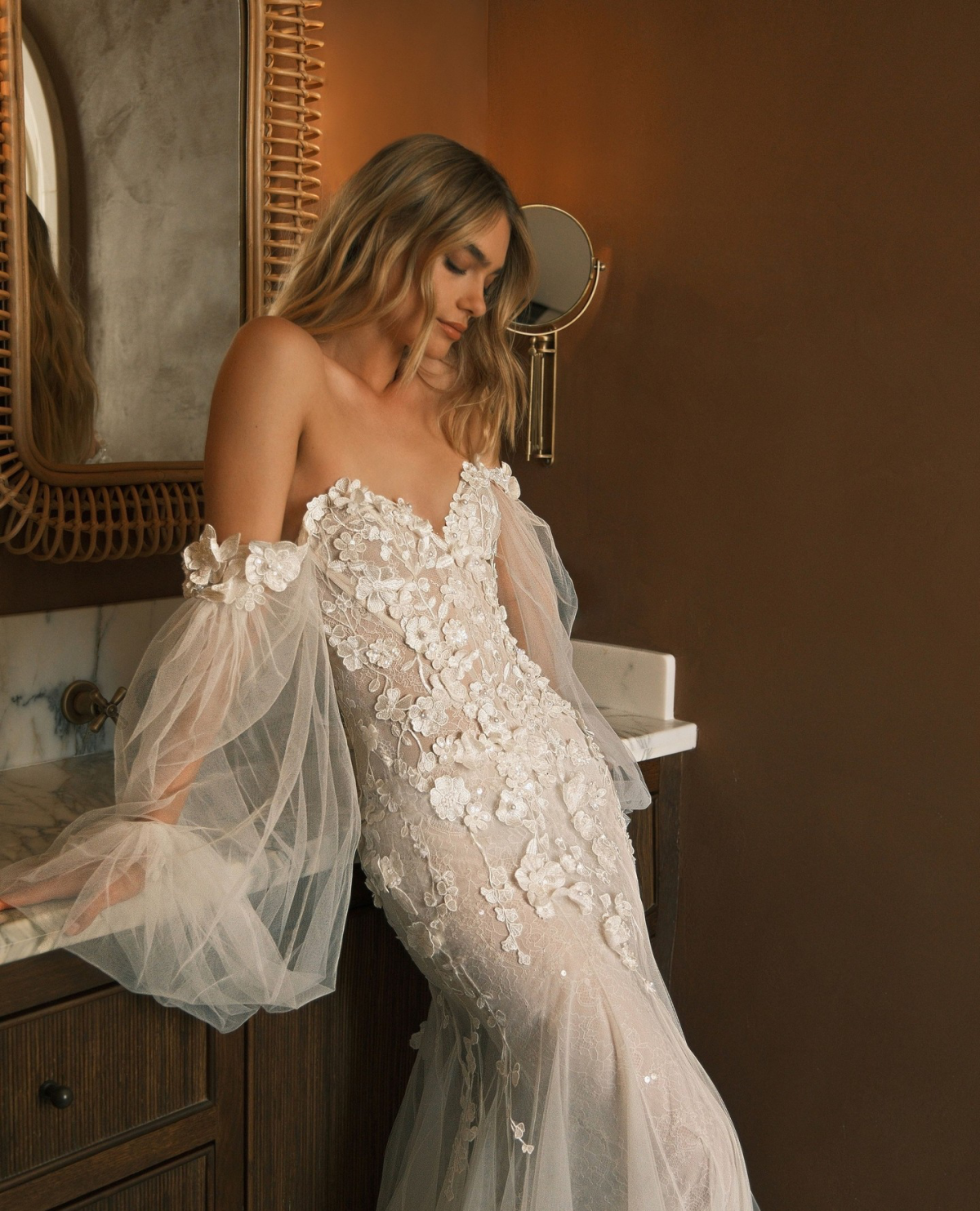
- Tulle: This is that classic, fine netting you see in ballet tutus. It’s incredibly light, so you can have a massive, full skirt without feeling weighed down. It’s the perfect backdrop for 3D floral appliqués or delicate embroidery because its sheerness makes the flowers look like they’re floating right on your skin. Heads up, though: Tulle is delicate and can snag on jewelry or even a rough chair back. Be gentle with it!
- Silk Organza: A step up from tulle in terms of structure. Organza is crisp, sheer, and has a gorgeous, subtle sheen. It creates volume that holds its shape, but it’s still very light and breathable. Floral prints on organza are to die for—they have this soft, watercolor effect. It has what we call a “crisp hand,” which means it makes a soft rustling sound when you move, which many brides find very romantic.
- Chiffon: This fabric is all about drape. It’s matte, soft, and flows beautifully, making it ideal for sheath or A-line gowns. Because it doesn’t hold structure well, it’s best for lightweight floral embroidery. You wouldn’t put heavy beading on chiffon; it would just pull the fabric down and ruin the dress’s shape. It’s also incredibly breathable, making it a fantastic choice for a summer or destination wedding.
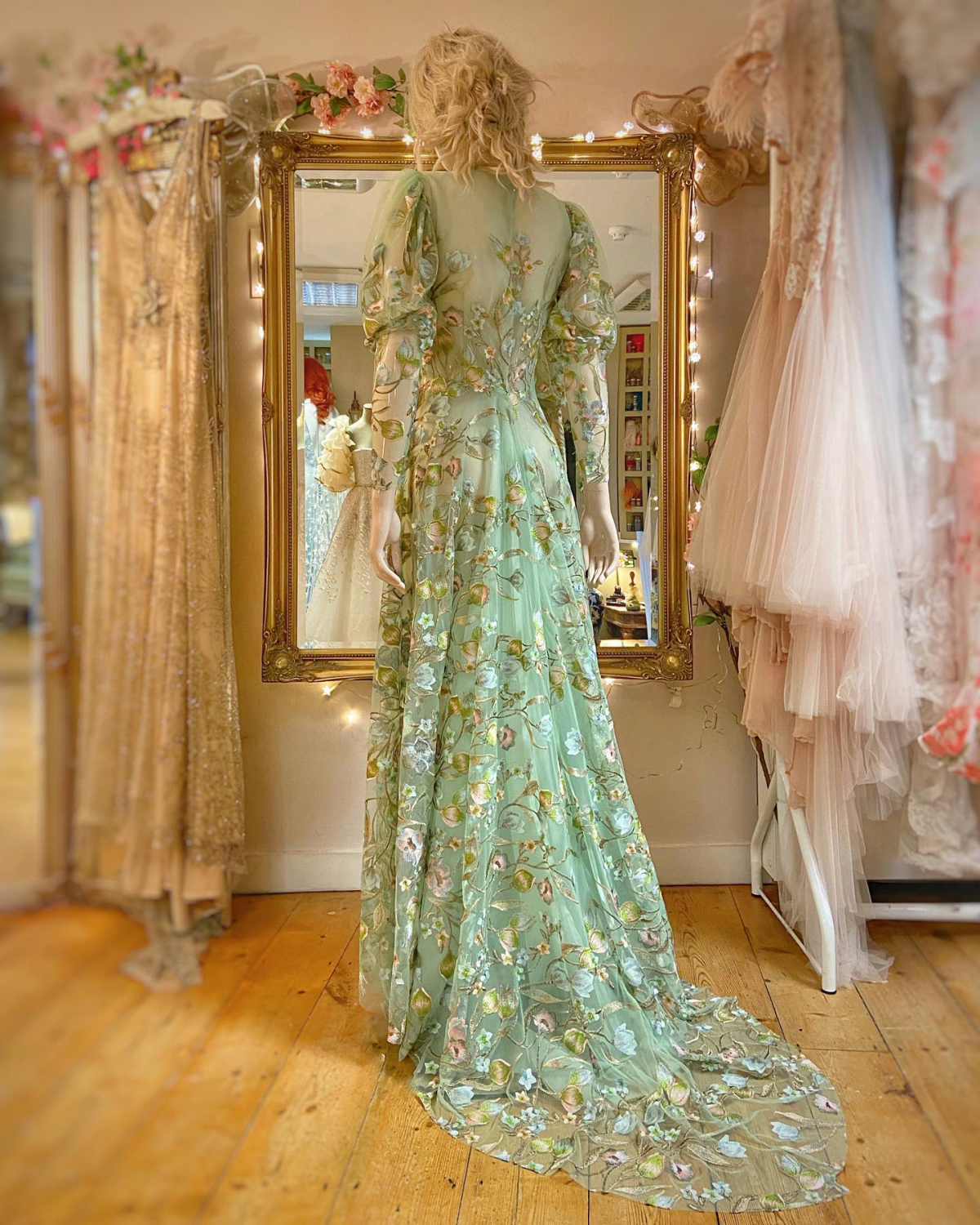
For a More Structured, Dramatic Look
If you want a gown that makes a statement with a bold shape or can handle some serious sparkle, you need a fabric with more backbone.
- Mikado: This is a blended silk that’s thick, smooth, and has a rich luster. It’s amazing for structured A-line or ballgown silhouettes because it holds its shape perfectly. Its smooth surface is a fantastic canvas for bold floral prints, and it’s strong enough to support heavy, concentrated beading without breaking a sweat. The only downside? It can be a bit warm, so it’s probably better for an indoor or cooler-weather wedding.
- Satin: A total classic for a reason. Satin is known for its incredible shine and luxurious weight. That weight gives it a beautiful, flowing drape that feels expensive. It’s a great choice for gowns with intricate embroidered floral patterns, as the threadwork really pops against the shiny background. Just be mindful that satin can be prone to snagging, and every little pull will show.
- Crepe: Don’t let its simple appearance fool you. High-quality crepe is a dream to wear—it’s smooth, has a graceful drape, and a modern matte finish. It’s perfect for sleek, minimalist silhouettes that might have a “pop” of floral detail on the bodice or trailing down the train. The catch? Crepe shows everything, so seamless undergarments are non-negotiable. It can also wrinkle a bit after you’ve been sitting, so just be aware of that.
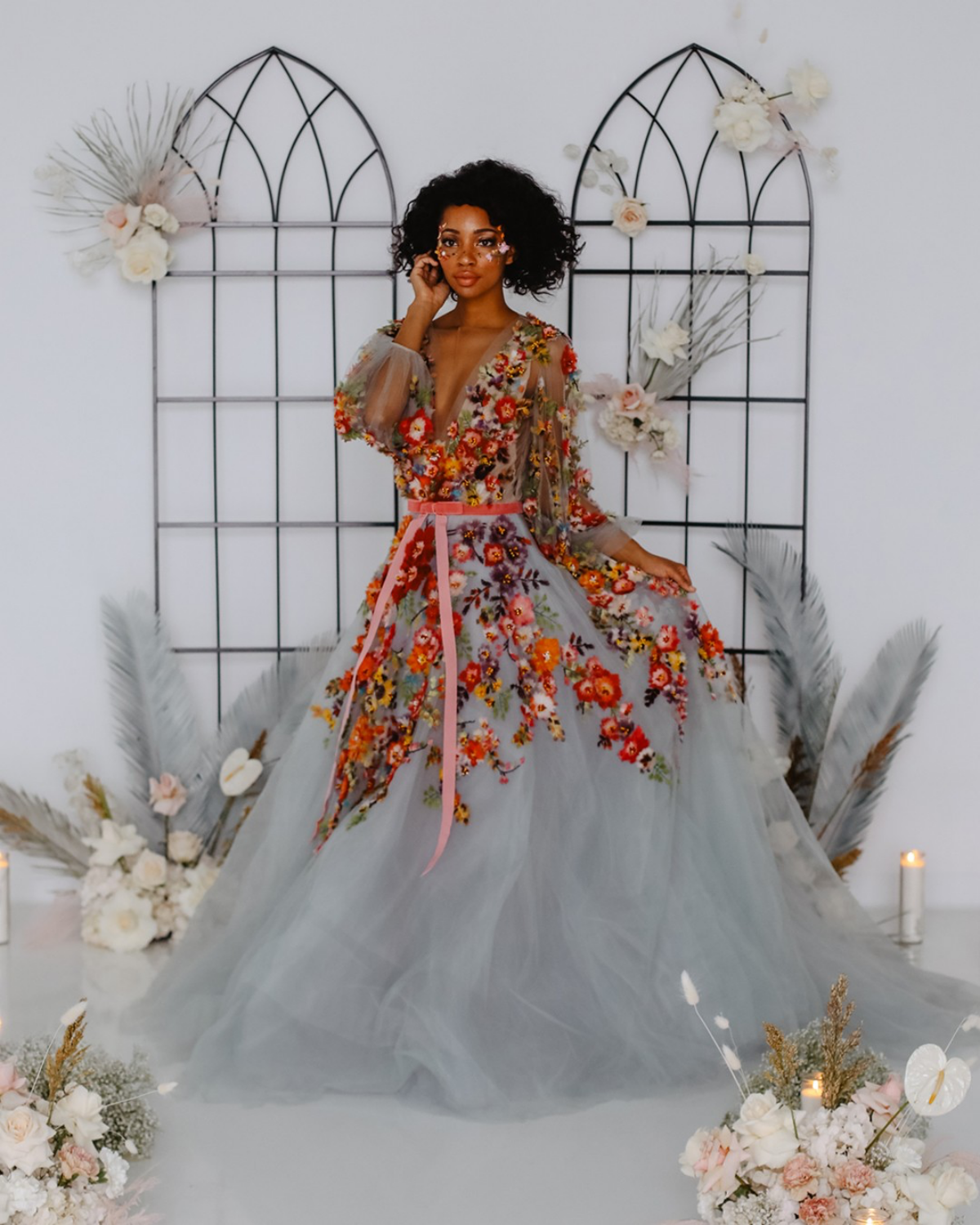
Breaking Down the Florals: What Are You Actually Paying For?
The term “floral” covers a huge range of techniques, and this is where the price can really start to vary. Understanding the difference between machine-made and handmade is key to figuring out your budget.
- The $1,500 – $2,500 Range (Machine-Made Magic): In this price range, you’ll mostly find machine embroidery. A computer guides a machine to create a precise and uniform floral pattern. It’s a fantastic way to get a beautiful floral look without a couture price tag. You may also see gowns with printed florals, where the design is printed directly onto the fabric. Done well, this can look stunning, but check the seams to make sure the pattern isn’t awkwardly cut off.
- The $3,000 – $7,000 Range (The Artisan’s Touch): This is where you enter the world of hand-craftsmanship. You’ll see gowns with lace appliqués, which are individual floral motifs cut from sheets of lace and then strategically hand-sewn onto the dress to flatter your body. You’ll also find 3D floral appliqués, which are little flowers made from layers of fabric that create incredible texture. This price point also introduces hand embroidery, where an artisan uses a needle and thread to create the design. The result is a one-of-a-kind piece with so much more depth and texture than machine work.
- The $8,000+ Range (Couture Craftsmanship): Welcome to the top tier. Here, you’ll find gowns with extensive hand-beadwork, where florals are created entirely from tiny beads, pearls, and sequins. This adds incredible sparkle and dimension, but also a lot of weight. A fully beaded bodice requires a serious internal corset to hold its shape. You’re not just paying for the materials; you’re paying for the countless hours of skilled labor and the high-level construction needed to make it all work.

The Hidden Stuff: Construction, Alterations, and What to Ask
A gorgeous floral design means nothing if the dress is poorly constructed. This is the hidden architecture that makes a gown feel amazing for 10+ hours, and it’s where a lot of unexpected costs can pop up.
A well-made gown with any kind of weight to it will have boning or even a full internal corset in the bodice. This keeps you supported and prevents the dress from sagging. When you’re trying on gowns, really feel the bodice. Does it feel flimsy, or does it feel substantial? That structure is worth paying for.
The Alterations Warning: Please Read This!
Okay, lean in. This is one of the most important things I tell my brides. Altering a heavily detailed floral gown is a complex, expensive job that requires a true expert. I once had a bride bring in a stunning hand-appliquéd gown that a local tailor had tried to take in at the sides. Instead of carefully removing the appliqués first, he just sewed right over them, crushing the delicate 3D petals and creating a puckered, ugly seam. We spent hours painstakingly undoing the damage and re-sewing each piece by hand. It was a close call.
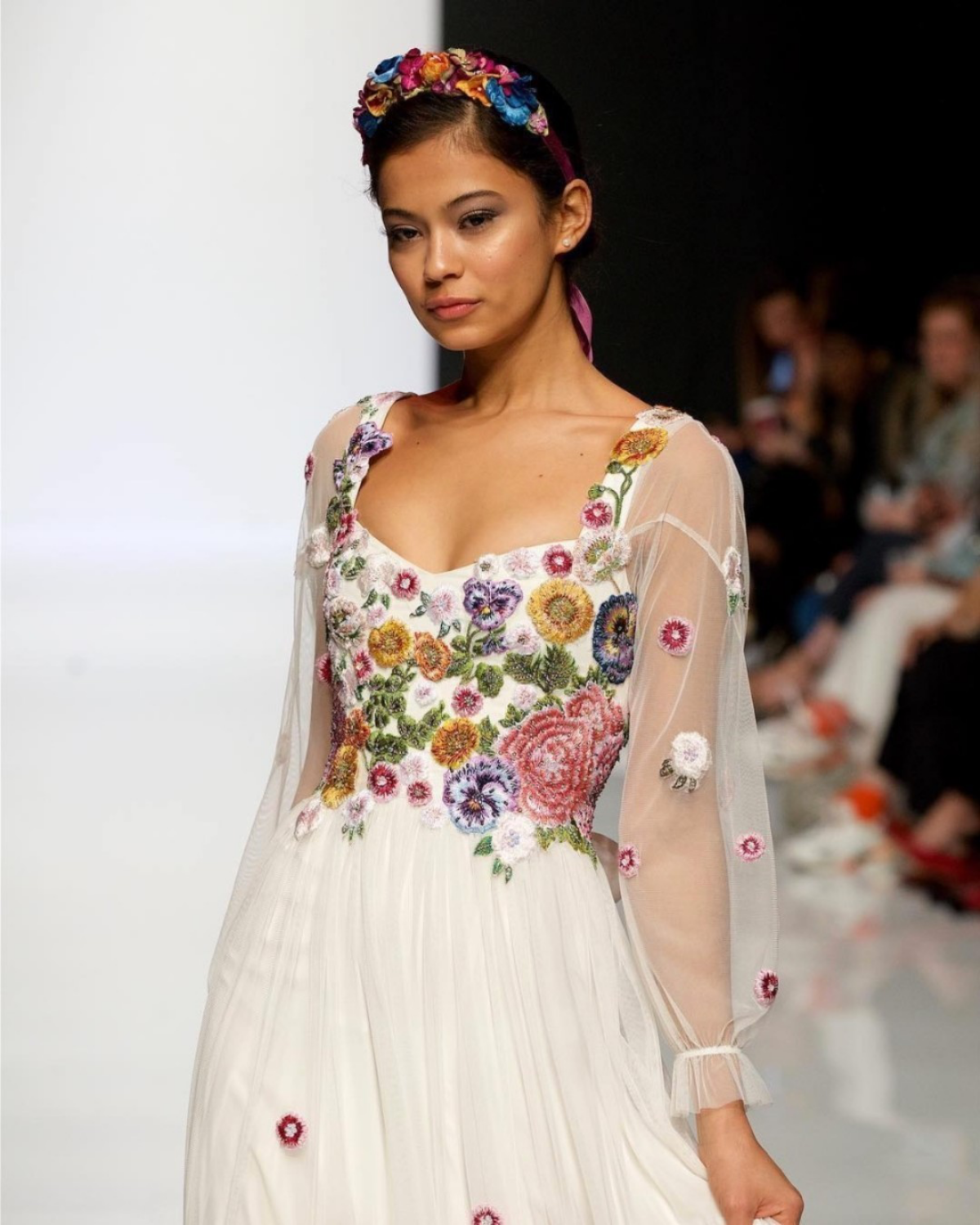
Here’s what you need to budget for, both in time and money:
- Hemming a Detailed Border: If your gown has a floral design along the hem, it can’t just be chopped off. The entire border has to be carefully removed, the skirt shortened, and the border perfectly reapplied by hand. This alone can cost anywhere from $400 to $900, compared to a simple hem which might be $150.
- Taking in the Bodice: If the sides are covered in beads or appliqués, the seamstress has to remove every single embellishment in the seam area, alter the dress, and then sew each piece back on by hand so the pattern looks seamless. This is incredibly time-consuming.
Your Pre-Appointment Checklist
Before you even step into a salon or a tailor’s shop, have your questions ready. Don’t be shy—a good professional will be happy to answer them.
Questions for the Bridal Salon:
- “What is the typical timeline for a gown with this much handwork?” (Hint: It’s often 8-12 months!)
- “Do you have an in-house alterations team that specializes in complex floral gowns?”
- “Can you give me a rough estimate for alterations on a dress like this, specifically for hemming the border and taking in the sides?”
Questions for the Seamstress:
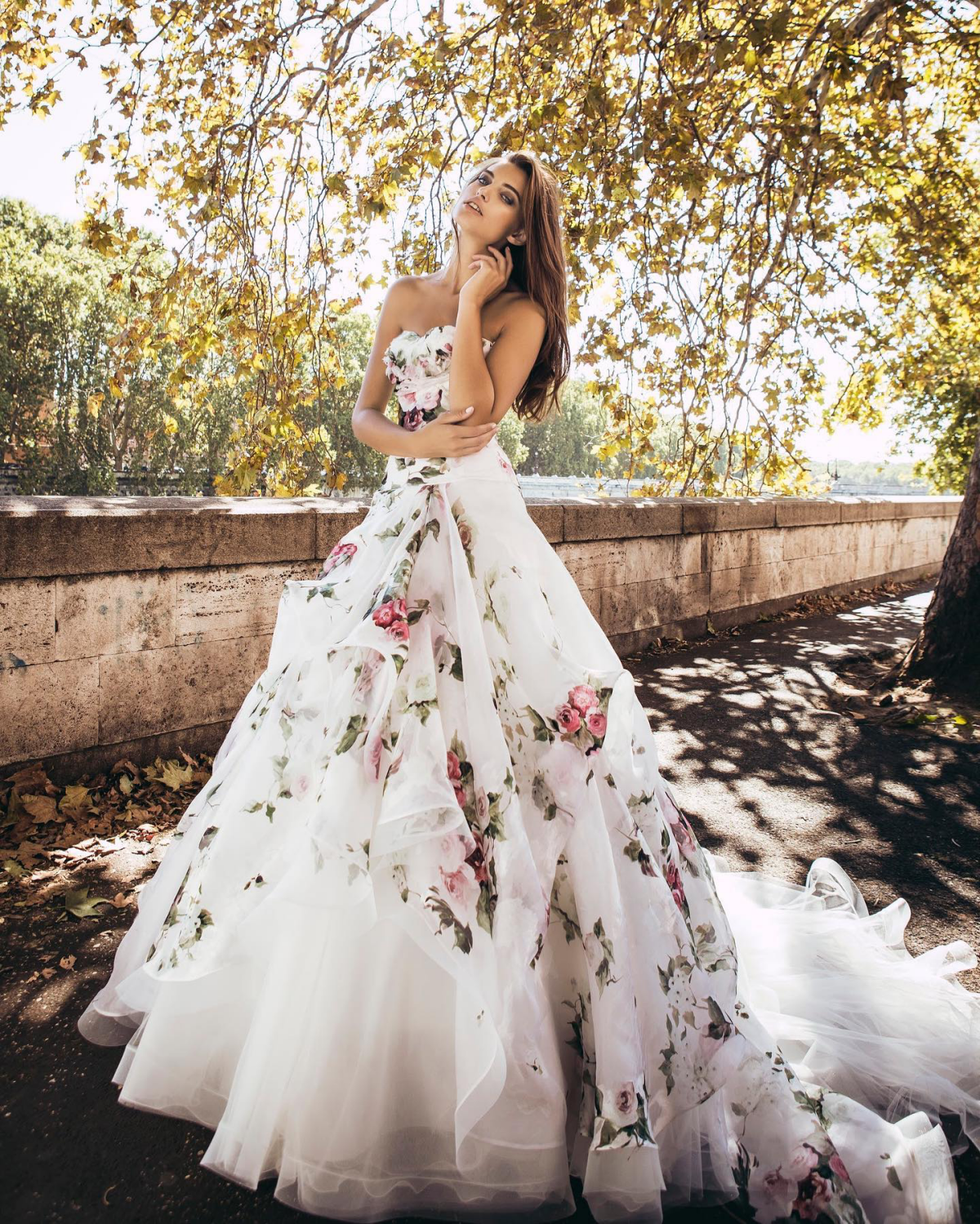
- “Have you worked on gowns with 3D appliqués or heavy beading before? Can I see photos of your work?”
- “Can you explain your exact process for hemming a gown with a detailed border?”
- And the killer question: “Can you show me an example of how you reapply appliqués after taking in a seam so they look undisturbed?” Their answer will tell you everything you need to know about their skill level.
Final Tips for Your Search
Don’t Get Scammed Online
I know it’s tempting. You see a couture-looking floral gown online for $400 and think you’ve hit the jackpot. Please, please be careful. These are almost always knock-offs made with cheap materials. That “silk organza” is likely stiff polyester, those “pearls” are plastic, and the intricate embroidery will be a pale imitation. The fit will be off, the colors won’t match the photo, and trying to return it to an international seller is often a nightmare. It’s simply not worth the risk for your wedding day.
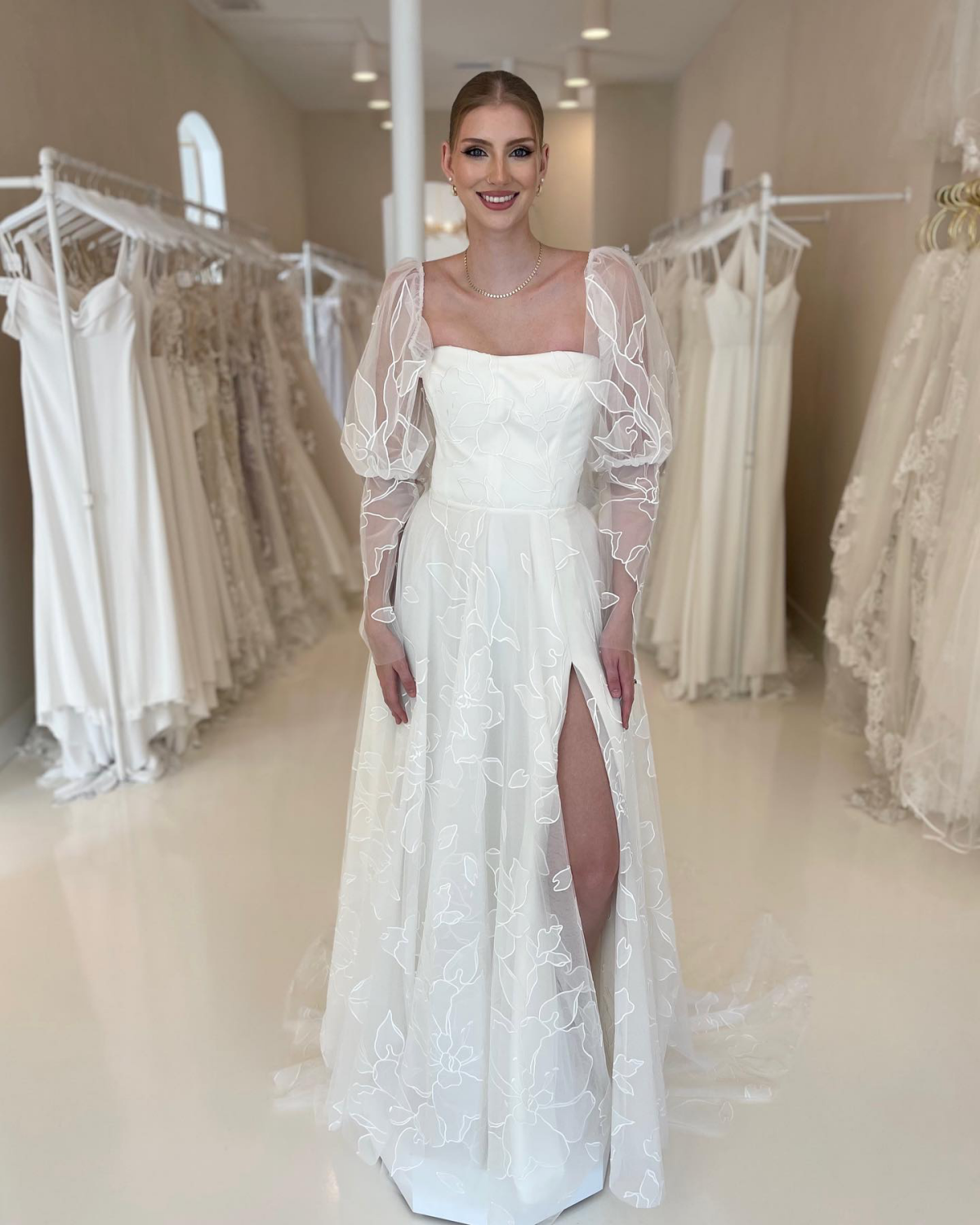
What to Bring to Your Appointment
To make the most of your time trying on these special gowns, come prepared!
- The right underwear: Seamless and nude is the way to go.
- Shoes: Bring a pair of heels roughly the height you plan to wear.
- A hair tie: To get your hair out of the way and see the necklines clearly.
- What to leave at home: Heavy foundation that can smudge the sample gowns and dangly jewelry that can snag delicate fabrics.
Choosing a floral gown is such a joyful process. By arming yourself with a little inside knowledge, you can navigate the choices with confidence and find the one that’s not just beautiful, but is beautifully made for you.
Galerie d’inspiration
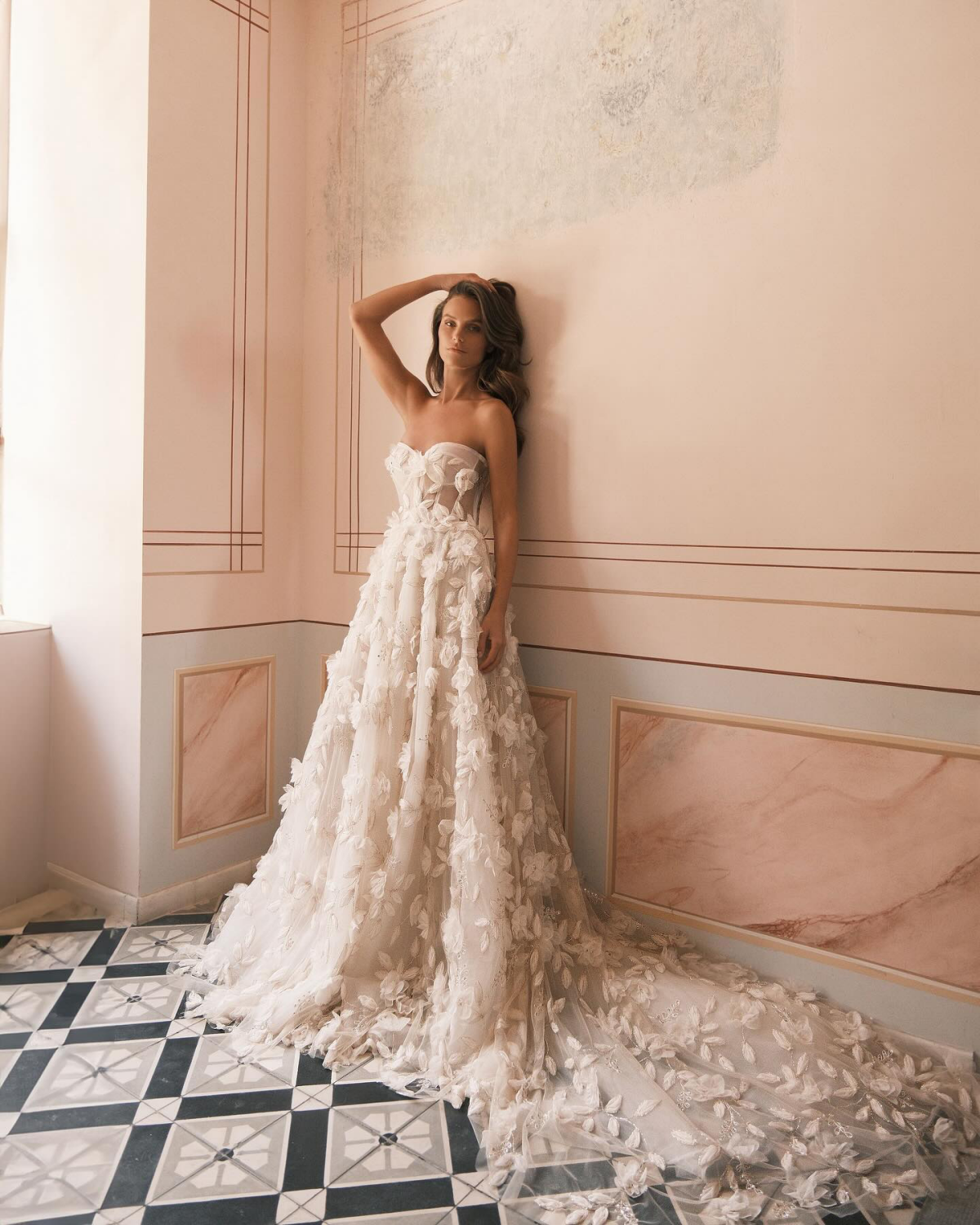
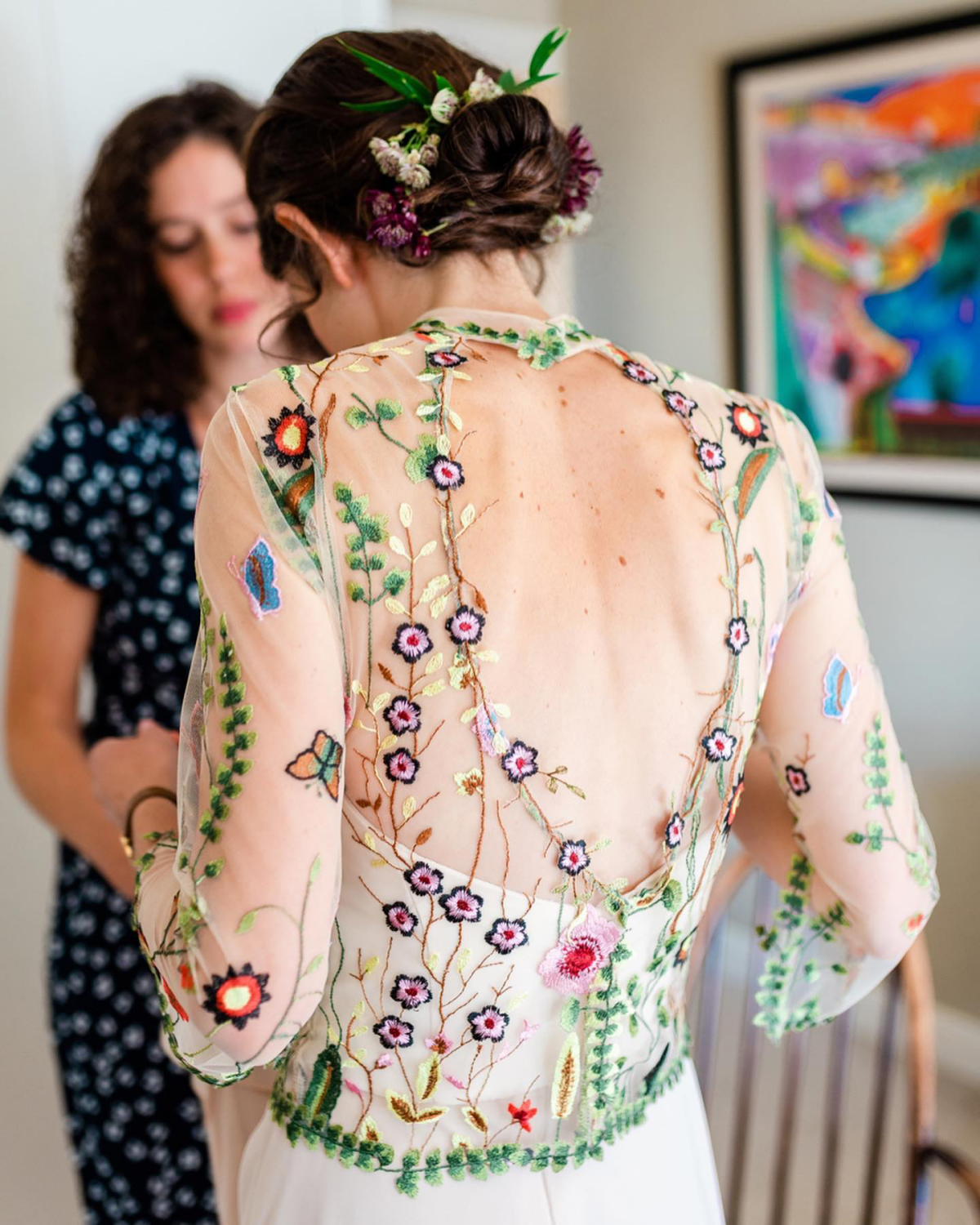
Printed Florals: Achieved by printing directly onto fabrics like organza or Mikado silk, this method offers vibrant, watercolor-like designs at a more accessible price point. The feel is smooth and integrated into the fabric.
3D Appliqué & Embroidery: This involves hand-stitching individual fabric flowers, beads, and threads onto a base layer. It creates incredible texture, depth, and a luxurious, couture feel. The trade-off is a higher cost and a heavier gown.
Ultimately, the choice depends on whether you prioritize a seamless, artistic look or a richly textured, dimensional one.
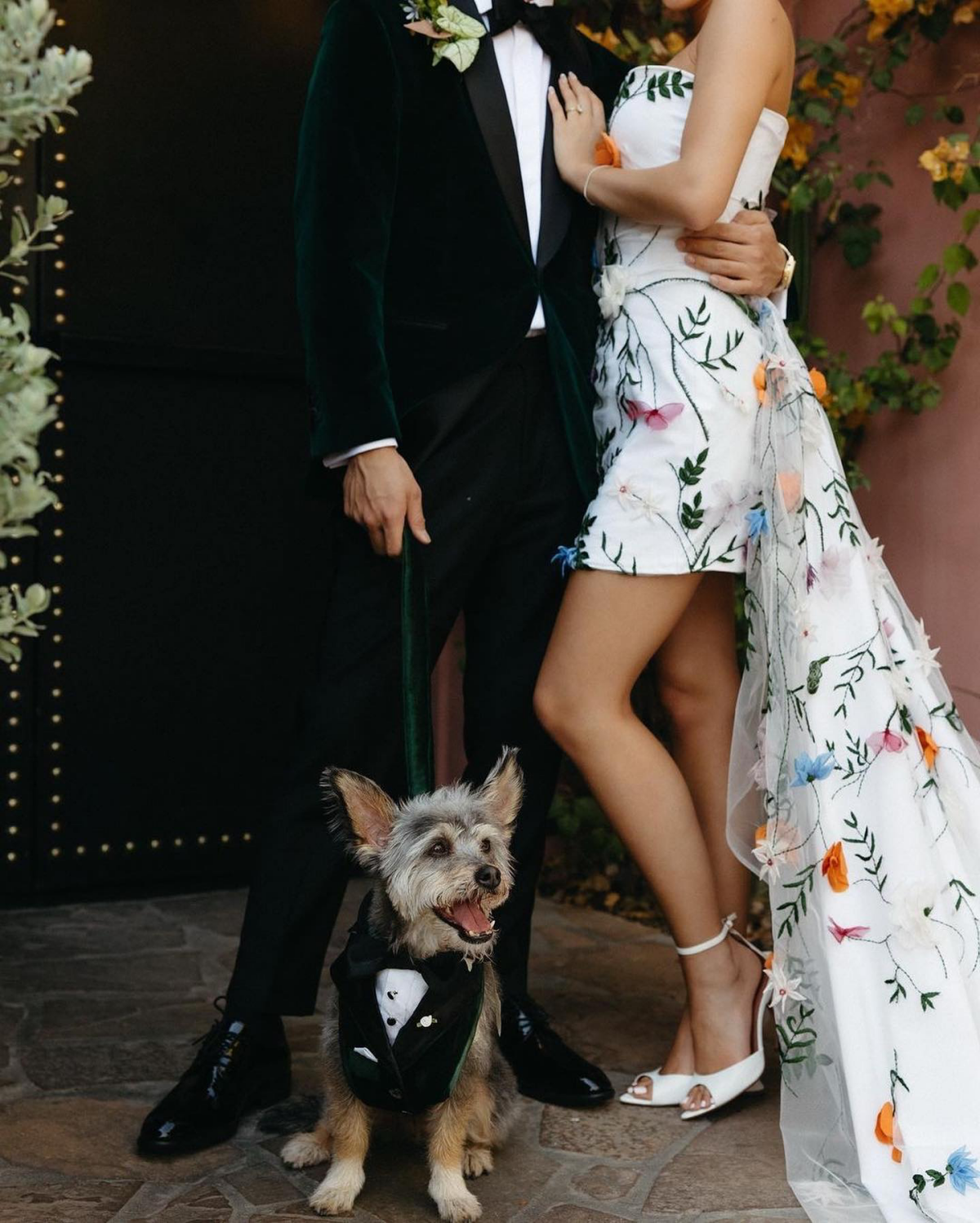
A single couture wedding gown by a designer like Elie Saab can feature over 10,000 hand-sewn sequins and beads, requiring a team of artisans hundreds of hours to complete the floral motifs.
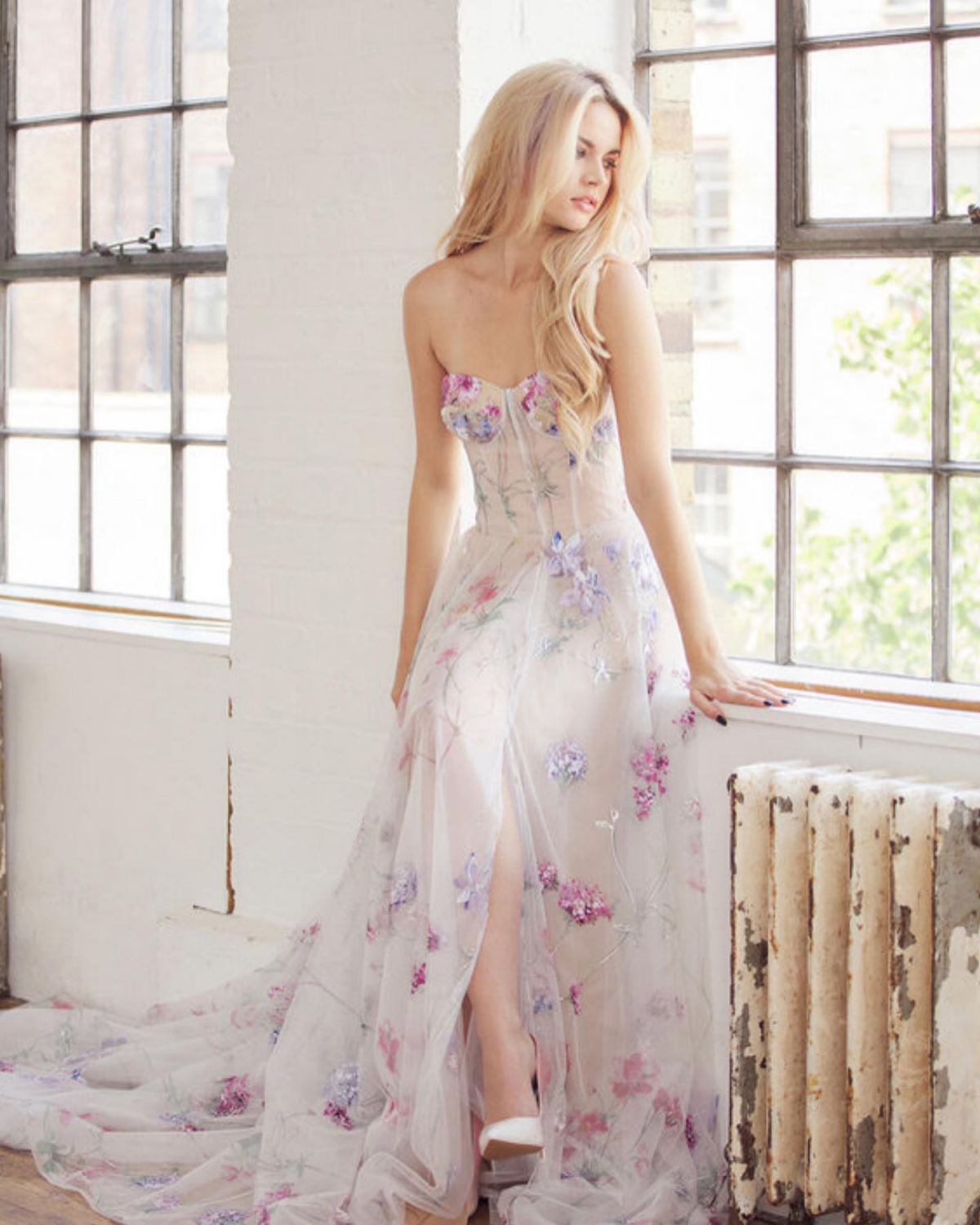
Does choosing a floral gown mean giving up on a modern, minimalist look?
Absolutely not! The key is in the execution. Forget busy, all-over prints. Think of ‘ghost’ florals woven into a silk jacquard for a subtle, textural effect that only reveals itself up close. Or consider a single, masterfully crafted 3D organza magnolia on the shoulder of a sleek crepe column dress, a signature of minimalist bridal designers like Danielle Frankel. The modern floral is less about pattern and more about a singular, sculptural statement or a whisper of romance on an otherwise clean silhouette.
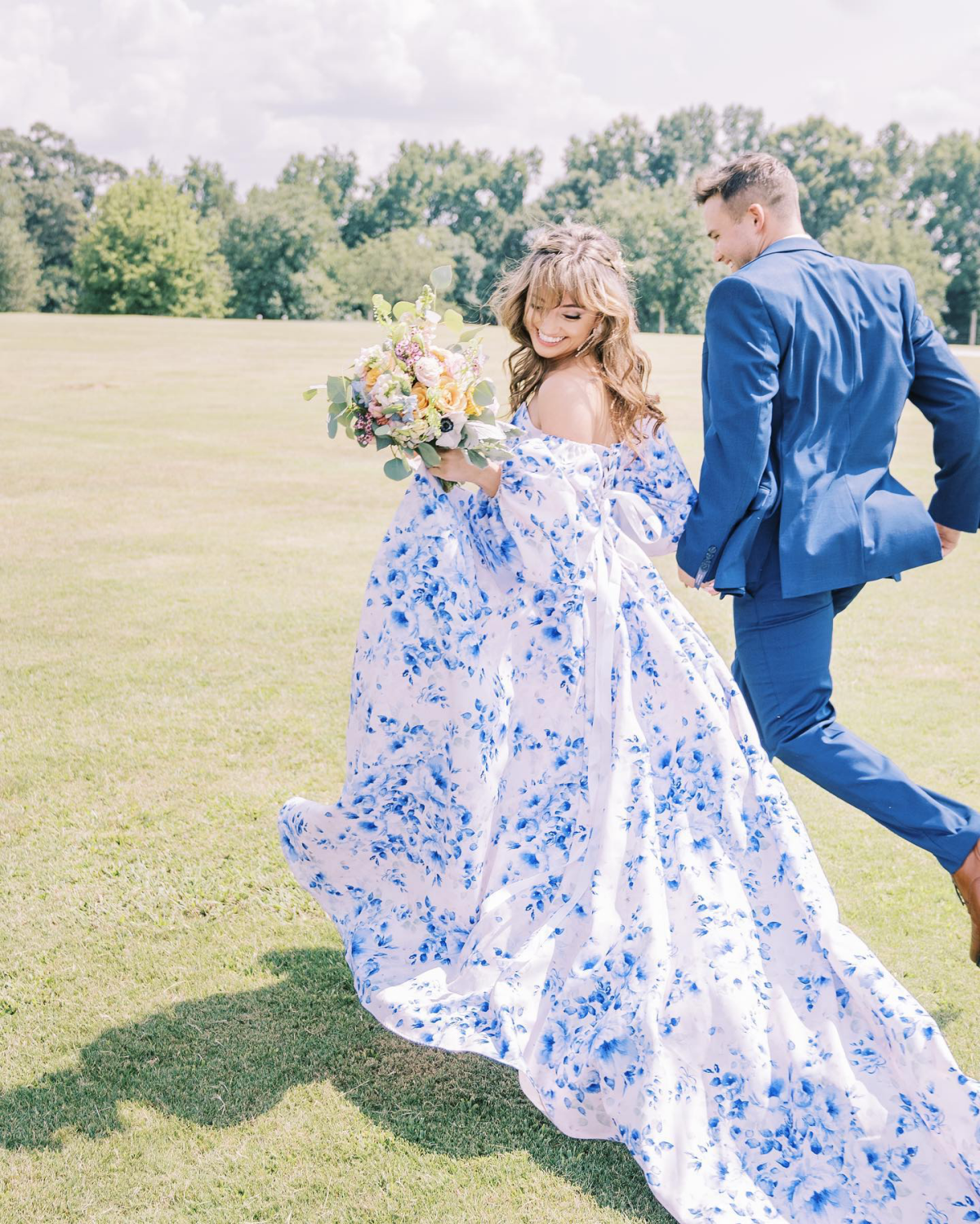
- Before you walk down the aisle, have your maid of honor do a quick
A secret to making your floral gown unforgettable: Weave in a personal story. Beyond aesthetics, research the Victorian

